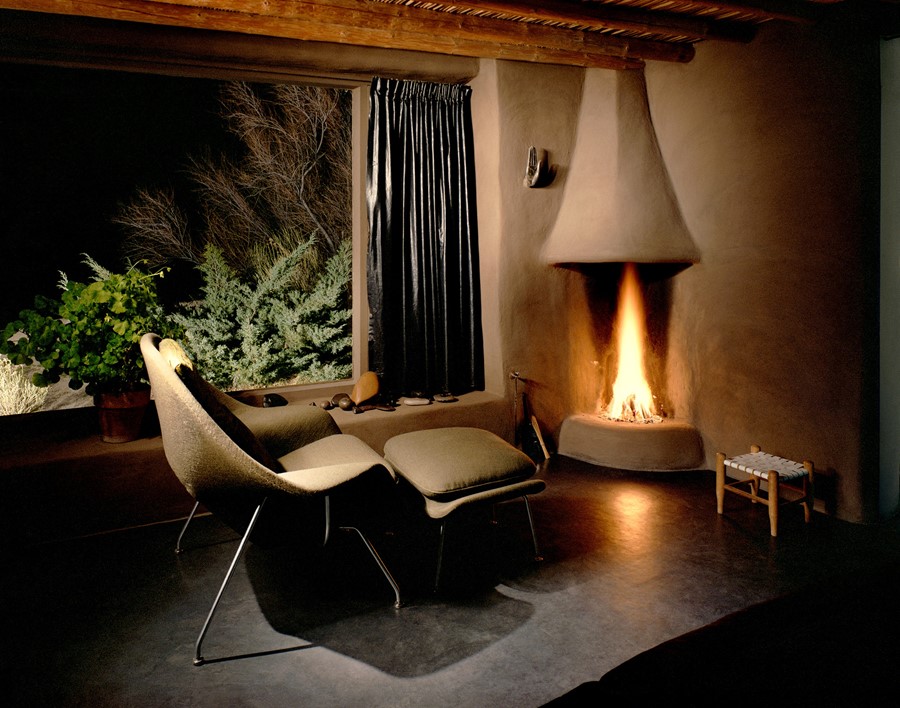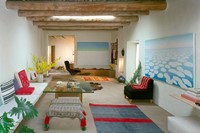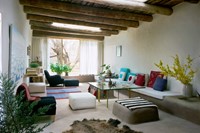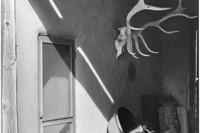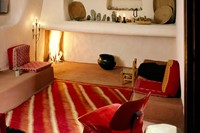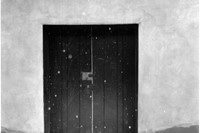A look at the modern artist’s exquisitely simple Western interiors aesthetic
American artist Georgia O’Keeffe first ventured to New Mexico with her friend Rebecca Strand James in 1929. O’Keeffe fell in love with the parity and austerity of the region’s landscape and the organic shapes of the Texan desert were soon to infiltrate her work, almost entirely. The artist began to travel back and forth: while she spent most of the year in New York with her husband, photographer Alfred Stieglitz, she would make summer sojourns to an artists’ compound, set up by wealthy American Patron Mabel Dodge Luhan in Taos, each year. Stieglitz would never make the pilgrimage to O’Keeffe’s spiritual home but would enjoy her fierce independence as much as her desert findings: she would return each year with a development of her new Western-worthy wardobe – maybe lowbrow Levi’s or organic linens – as well as artefacts – stones, skulls – scoured from the outdoors that she would bring home to him.
After a few years frequenting the soon-to-be overcrowded colony at Taos, O’Keeffe began to rent her own property, Ghost Ranch, but it wasn’t until Stieglitz’ death in 1946 that she bought a place in Abiquiu, as pictured here and in Rizzoli’s latest book, and moved west completely. So keen to inhabit an 18th century Spanish Colonial building, O’Keeffe convinced the owners to sell to her, later claiming that she had, “bought the place because it had that door in the patio – the one I’ve painted so often. I had no peace until I bought the house.”
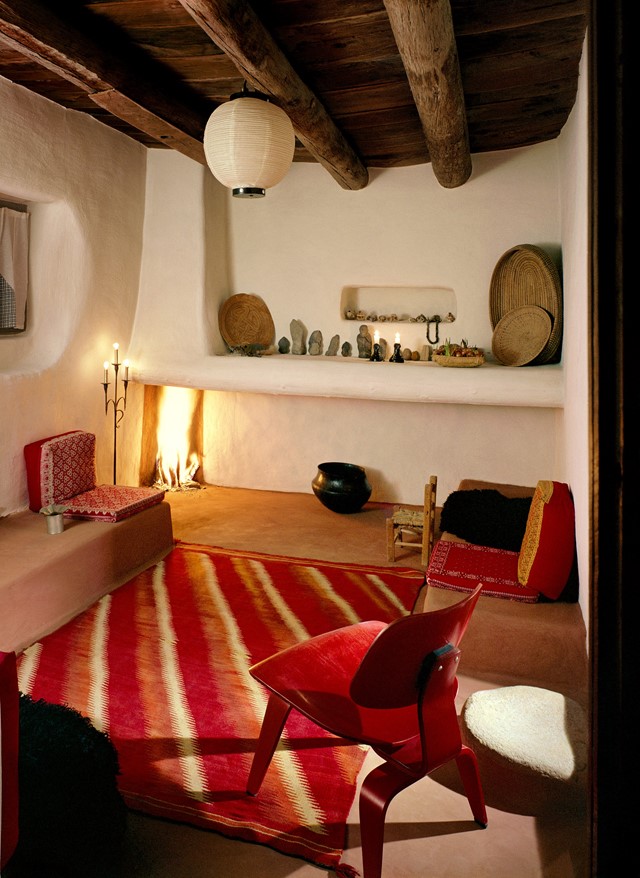
Over years of renovations, the Abiquiu house became a modernist paradise. Floors of natural adobe – a building material hewn from packed earth – were polished smooth; tables and sofas of the same organic material were all softened with rounded edges, their neutral tones making for a soft and serene backdrop. Accents in primary colours – a red Eames chair, colourful Navajo rugs and vibrant pillows – leant a hum of energy to these peaceful spaces. Eventually, many of the rooms in the house would feature panoramic picture windows that revealed vast swathes of the colourful stone landscape in the distance. Only a few pieces of art were dotted through the house: some paintings – her own, of course – as well as foraged wonders, like a pair of sun-bleached elk horns that marked the main entrance of the house. Besides these, was a sparse and elegant hanging mobile (Untitled) by her friend, artist Alexander Calder, which hung in her living room. His puritanical yet softly organic aesthetic fitted in perfectly, as O’Keeffe had once stated, “It is only by selection, by elimination, and by emphasis, that we get at the real meaning of things” – an adage that neatly summarises the organic elegance of this home.
How They Decorated: Inspiration from Great Women of the Twentieth Century is out now, published by Rizzoli.
